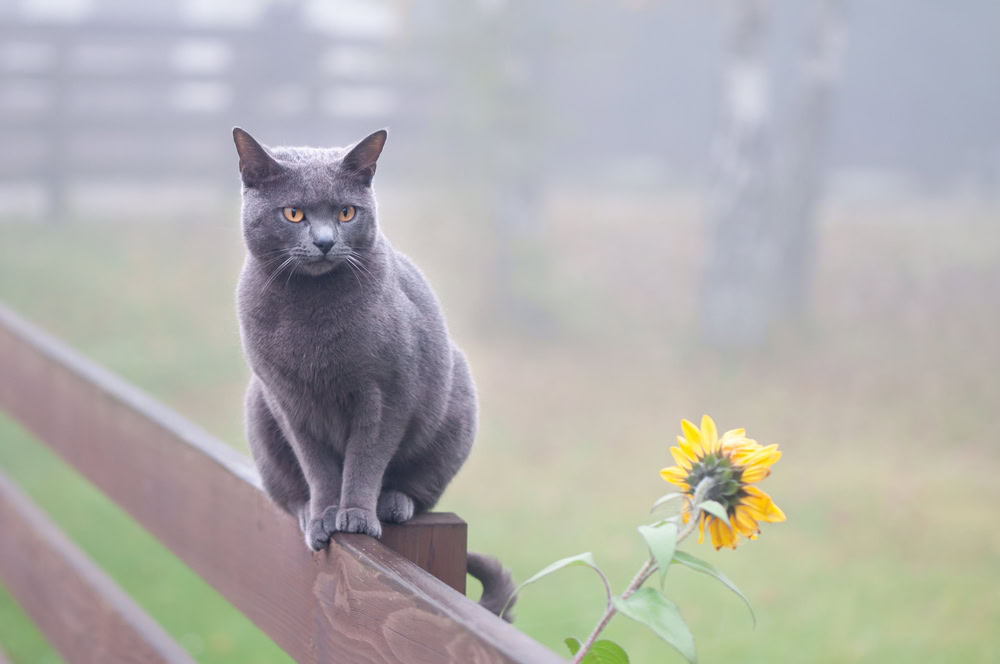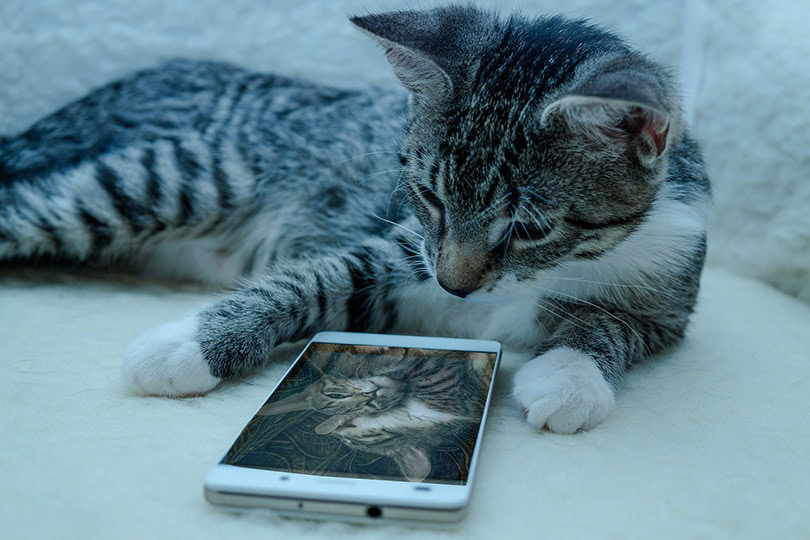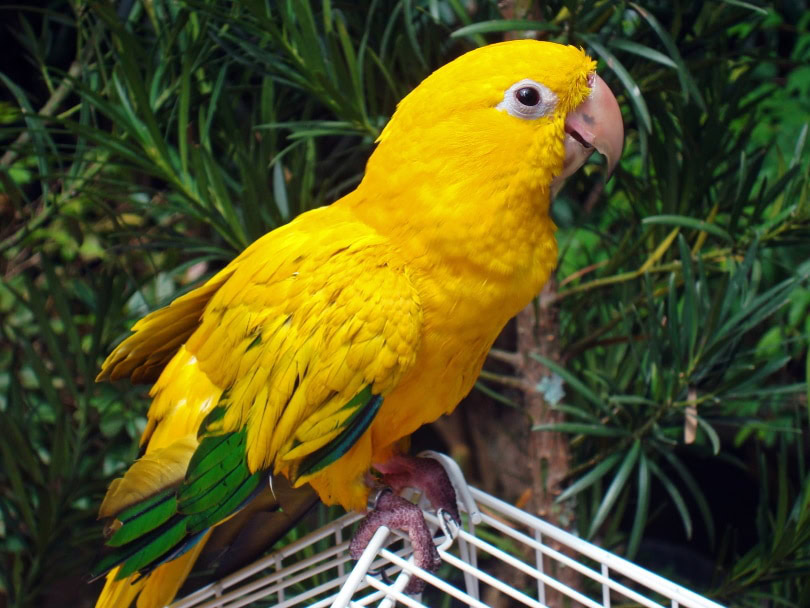VET APPROVED

The information is current and up-to-date in accordance with the latest veterinarian research.
Learn more »Click to Skip Ahead
Cats have been a part of human history for thousands of years, evolving from wild hunters to loving companions. The domestication of cats began between 7000 and 5000 B.C. in northern Africa when tabby-striped wildcats started living alongside humans. Over time, selective breeding led to the development of certain breeds, each with its own unique characteristics and traits. From all the cat breeds there are today, we’ve categorized them into hybrids, exotics, natural breeds, selectively bred, designer breeds, and mutation cats. Each type of cat breed has interesting origins and is part of today’s feline world with their unique traits and characteristics. We’ll discuss how we categorize the types of cat breeds, and share some details about a few of the most common breeds in each category.

Hybrid Cats
Hybrid cat breeds result from intentional crossbreeding between domestic cats and their wild counterparts. These cats often have strong personalities and unique appearances. Some hybrid cats have become very popular in the feline world and make loving companions to many cat parents, but due to their wild genetics, there are laws that restrict where and if you can keep some of these cats. Laws vary by state in the US. Some breeds are legal in certain areas but banned in others, while some require special licenses. These laws usually pertain to first-generation hybrids – i.e. the offspring of a wild cat and a domestic cat, also known as the F1 generation. While these magnificent cats are appealing to the eye, be aware that their wild appearance is often matched by exuberant personalities, and these kitties often don’t take to an indoor lifestyle and don’t always make good pets.
1. Savannah
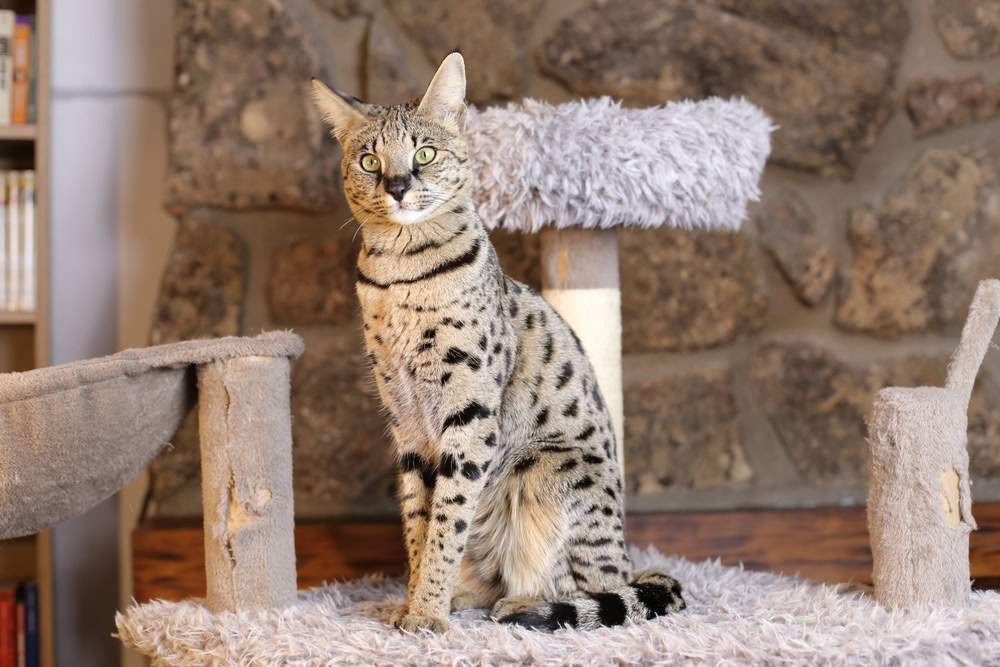
Breed Overview
Height:
14-17 inches
Weight:
12-15 pounds
Lifespan:
17-20 years
Colors:
Brown, silver, black, smoke
Suitable for:
Active families, those wanting a large cat
Temperament:
Loyal, social, playful, friendly, suspicious, active, mischievous
The Savannah is a hybrid between a domestic cat and a wild African serval, making them one of the most striking cat breeds. Savannahs are highly intelligent, and energetic, and require plenty of space and mental stimulation. They form strong bonds with their owners, usually displaying dog-like behavior, and some even enjoy playing fetch or walking on a leash. Due to their wild heritage, Savannahs are not legal in all areas and may require special permits.
Savannah Legal Ownership Status in the US
- Legal, All Generations: Alabama, Arizona, Arkansas, California, Connecticut, DC, Florida, Idaho, Illinois, Kansas, Kentucky, Louisiana, Maine, Michigan, Minnesota, Mississippi, Missouri, Montana, Nevada, New Jersey, North Carolina, North Dakota, Ohio, Oklahoma, South Carolina, South Dakota, Tennessee, Utah, Virginia, West Virginia, Wyoming
- Legal, F4, and Later Generations: Alaska, Colorado (not city limits of Denver), Delaware (permit), Iowa, Massachusetts, New Hampshire, Vermont
- Legal, F5, and Later Generations: New York (not in NYC proper)
- Some Restrictions and Permits: Indiana (permit required), Maryland (weight restrictions), New Mexico (permits required), Oregon (restrictions), Texas (limited counties), and Washington (but banned in Seattle)
- Complete Ban: Georgia, Hawaii, Nebraska, and Rhode Island
2. Chausie
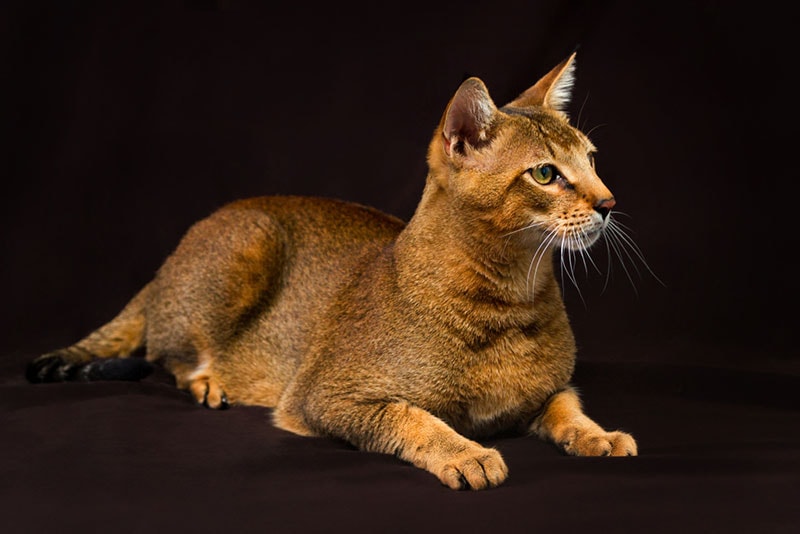
Breed Overview
Height:
14-19 inches
Weight:
15-30 pounds
Lifespan:
12-14 years
Colors:
Orange, red, brown, cream
Suitable for:
Families with older children, singles, seniors, apartment-living
Temperament:
Social, attentive, active
The Chausie is a rare breed that originates from crossbreeding domestic cats and jungle cats (Felis chaus). Chausies maintain a distinctly wild appearance due to their athletic form, and tall ears. They are very active and intelligent, requiring constant mental stimulation to keep them happy. They are affectionate and social but need plenty of care and activities, making them better suited for experienced cat owners.
Chausie Legal Ownership Status in the US
- Legal, All Generations: Alabama, Arizona, Arkansas, California, Connecticut, DC, Florida, Idaho, Illinois, Kansas, Kentucky, Louisiana, Maine, Michigan, Minnesota, Mississippi, Missouri, Montana, Nevada, New Jersey, North Carolina, North Dakota, Ohio, Oklahoma, South Carolina, South Dakota, Tennessee, Utah, Virginia, West Virginia, Wyoming
- Legal, F4, and Later Generations: Alaska, Colorado (not city limits of Denver), Delaware (permit), Iowa, Massachusetts, New Hampshire, Vermont
- Legal, F5, and Later Generations: New York (not in NYC proper)
- Some Restrictions and Permits: Indiana (permit required), Maryland (weight restrictions), New Mexico (permits required), Oregon (restrictions), Texas (limited counties), and Washington (not Seattle)
- Complete Ban: Georgia, Hawaii, Nebraska, and Rhode Island
3. Bengal
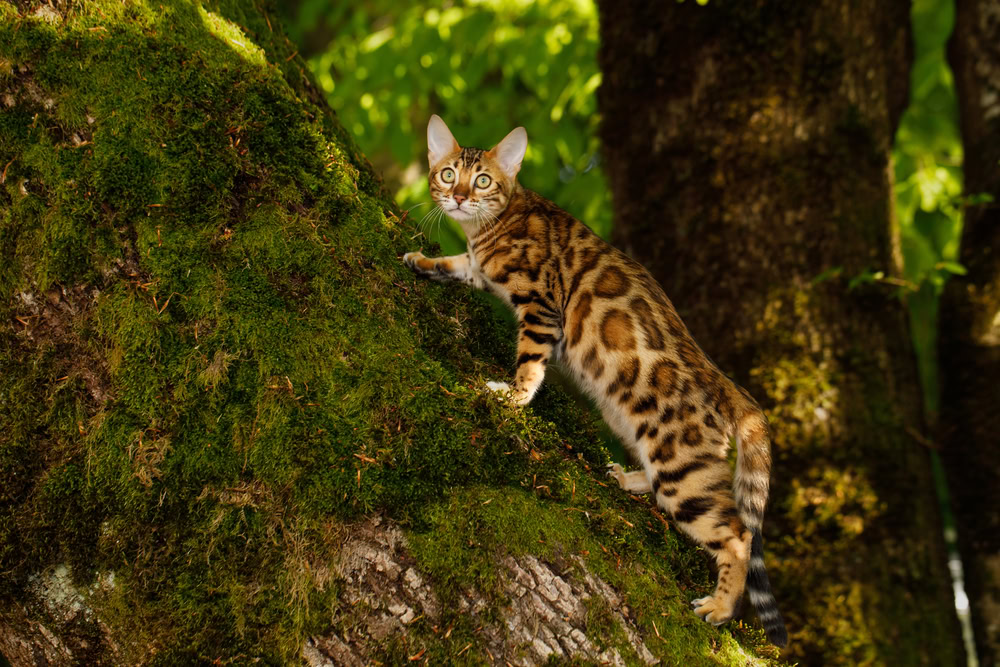
Breed Overview
Height:
8-10 inches
Weight:
8-15 pounds
Lifespan:
12-16 years
Colors:
Brown, silver, charcoal, snow, blue, melanistic
Suitable for:
Active households, families with older children, homes with space to play
Temperament:
Energetic, intelligent, social
The Bengal cat is an exotic breed known for its wild appearance, resembling a small leopard. Developed from crossing domestic cats with the Asian leopard cat, Bengals have a distinctive spotted coat. They are highly active, intelligent, and love interactive play. Unlike most cats, Bengals form strong bonds with their families and often enjoy water. These days, most Bengal cats are many generations from their wild roots, and the laws restricting them are more relaxed. However, if your cat is of an earlier generation, it is important to look into local laws.
Bengal Legal Ownership Status in the US
- Legal: Connecticut, Delaware, Idaho, Indiana, Iowa, Kentucky, Louisiana, Maine, Maryland, Michigan, Minnesota, Missouri, Montana, Nebraska, Nevada, New Hampshire, New Jersey, New Mexico, North Dakota, Oklahoma, Oregon, Pennsylvania, Rhode Island, South Carolina, South Dakota, Tennessee, Utah, Vermont, Washington, West Virginia, Wisconsin, Wyoming
- Some Restrictions and Permits: Alaska, Arkansas, Colorado, Florida, Illinois, Kansas, Massachusetts, North Carolina, Ohio, Pennsylvania, Texas, Virginia
Exotic Cat Breeds
If you are looking for a cat with the outward appearance of a wildcat and the temperament of a domestic pet, these are the breeds for you. These cats have been selectively bred from hybrids, tabbies, and other breeds to create felines with the exotic-looking spots, stripes, and rosettes of their wilder relatives, but they are well established domestic cats. In many countries, the Bengal is considered to now be an exotic breed rather than a hybrid.
1. Toyger
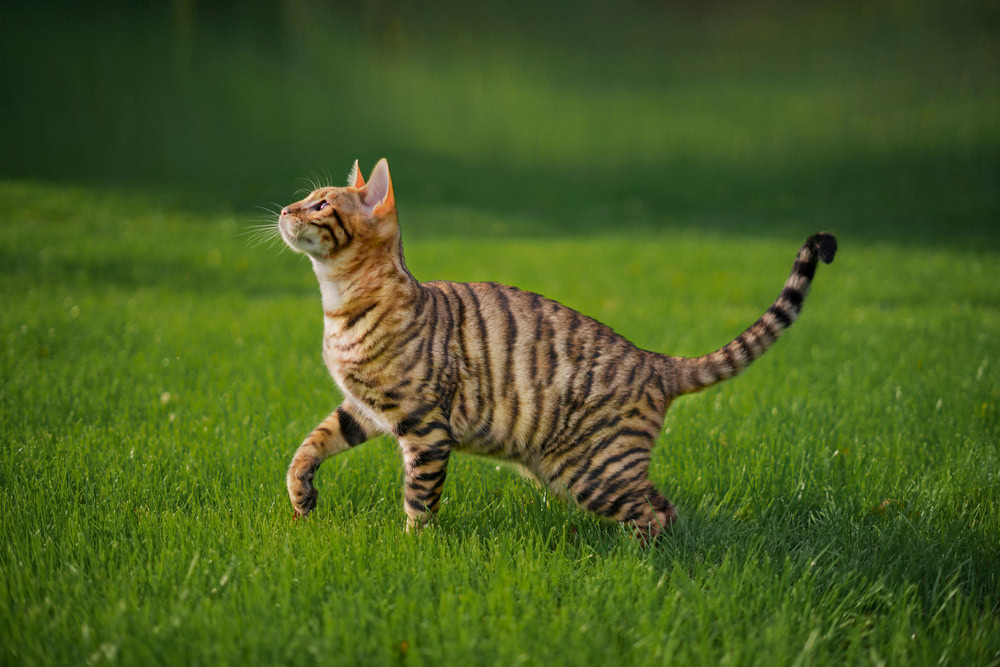
Breed Overview
Height:
14-18 inches
Weight:
7-15 pounds
Lifespan:
12-15 years
Colors:
Brown, orange, black mackerel tabby
Suitable for:
All lifestyles
Temperament:
Outgoing, energetic, and playful
Toygers are named after their tiger-like appearance. They were developed by crossing a domestic cat with a Bengal hybrid, with their creator aiming to raise awareness for tiger conservation worldwide. These cats have black stripes over a brown-colored coat that fades to white on the belly. Toygers thrive in domestic environments and adapt well to family life.
2. Egyptian Mau
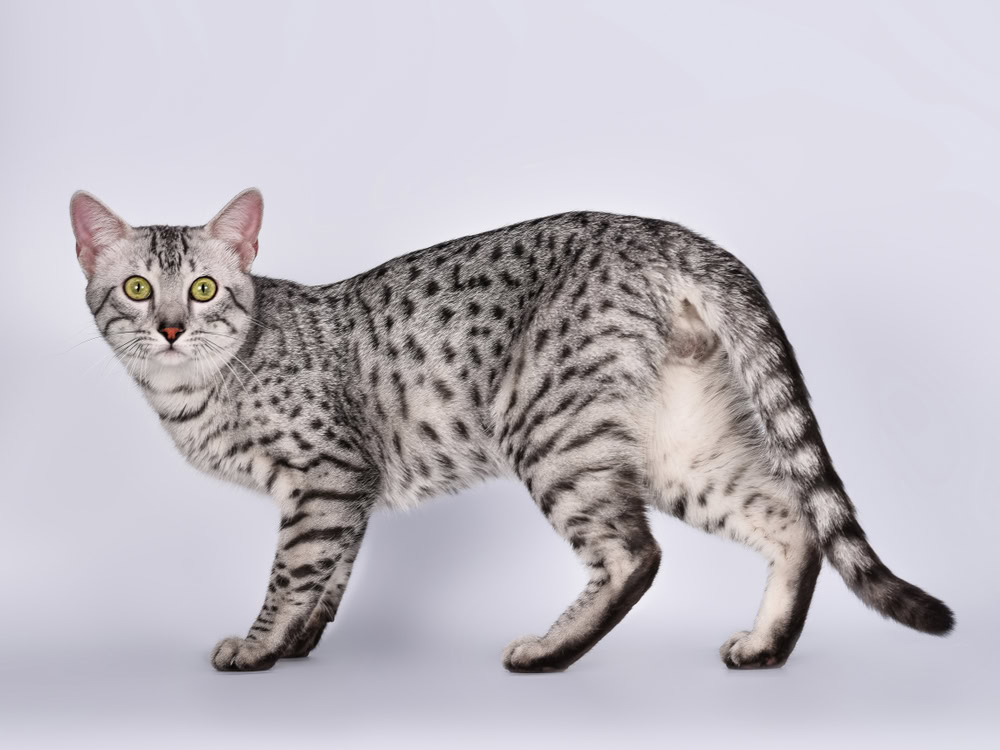
Breed Overview
Height:
8-10 inches
Weight:
7-9 pounds
Lifespan:
12-15 years
Colors:
Silver, bronze, and smoke with black spots
Suitable for:
All lifestyles
Temperament:
Lively, friendly, and athletic
Often mistaken for a far more ancient breed, these beautiful cats actually have their origins in New York! Despite their wild appearance, the Egyptian Mau is a loving and playful family member, but needs lots of exercise and play to tire them out.
3. Ocicat
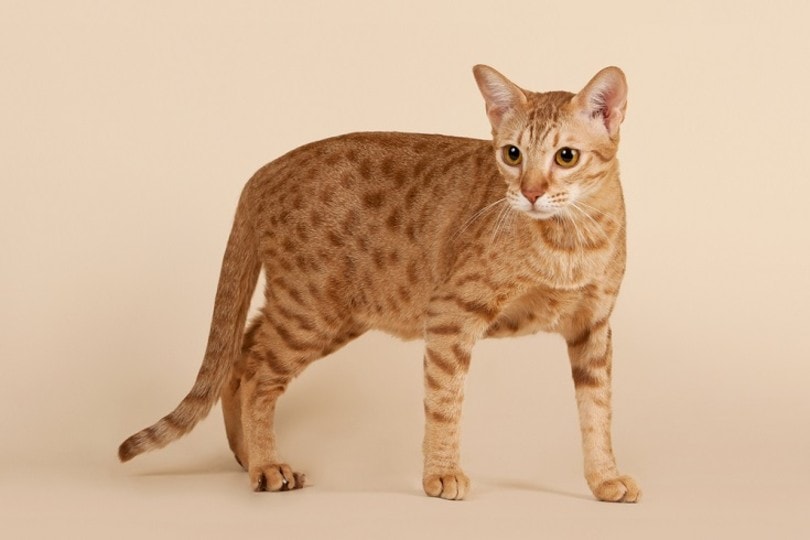
Breed Overview
Height:
9-11 inches
Weight:
6-14 pounds
Lifespan:
12-15 years
Colors:
Blue, lavender, chocolate, tawny, fawn, cinnamon
Suitable for:
Active families who are home a lot
Temperament:
Energetic, intelligent, and playful
Because of their name, people often mistakenly think these cats are a hybrid, crossed with the wild Ocelot, but in fact, there are no wild genes in these spotted felines. Ocicats have compact, muscular bodies and a long tail, along with a distinctive swagger that resembles that of a leisurely lion.

Natural Cat Breeds
Natural cat breeds have developed over centuries without human intervention. These breeds have adapted to various environments, resulting in hardy, well-balanced temperaments.
1. Maine Coon
Breed Overview
Height:
10-16 inches
Weight:
10-25 pounds
Lifespan:
12-15 years
Colors:
Brown, white, black, blue, cream, red
Suitable for:
All lifestyles
Temperament:
Dog-like, affectionate, intelligent
The Maine Coon is one of the largest domestic cat breeds, known for its size, long fur, and tufted ears. The Maine coon originated in Maine, where they are surprisingly the official state cat breed. They developed a water-resistant coat and furry tail to handle harsh winters. Despite their large size, they are gentle giants with a friendly and easygoing temperament.
2. Siberian
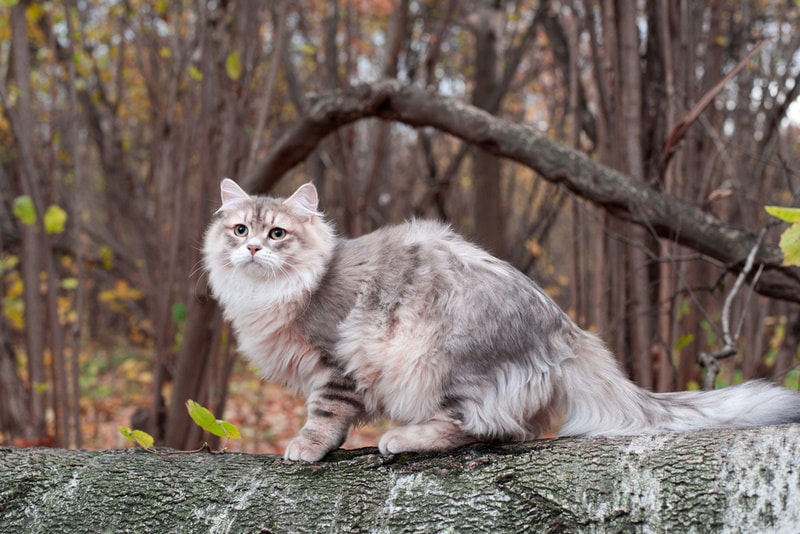
Breed Overview
Height:
17-25 inches
Weight:
8-17 pounds
Lifespan:
11-17 years
Colors:
All colors and patterns
Suitable for:
Active individuals
Temperament:
Playful, intelligent, affectionate
The Siberian cat originated from the forests of Russia, where their thick coat kept them warm in freezing temperatures. This natural breed is strong, smart, and playful. Although hypoallergenic cats don’t exist, the Siberian is known to have lower Fel d1 levels, which is one of the common allergens that affect people, making them a considerable option for those who suffer from cat allergies.
3. Norwegian Forest Cat
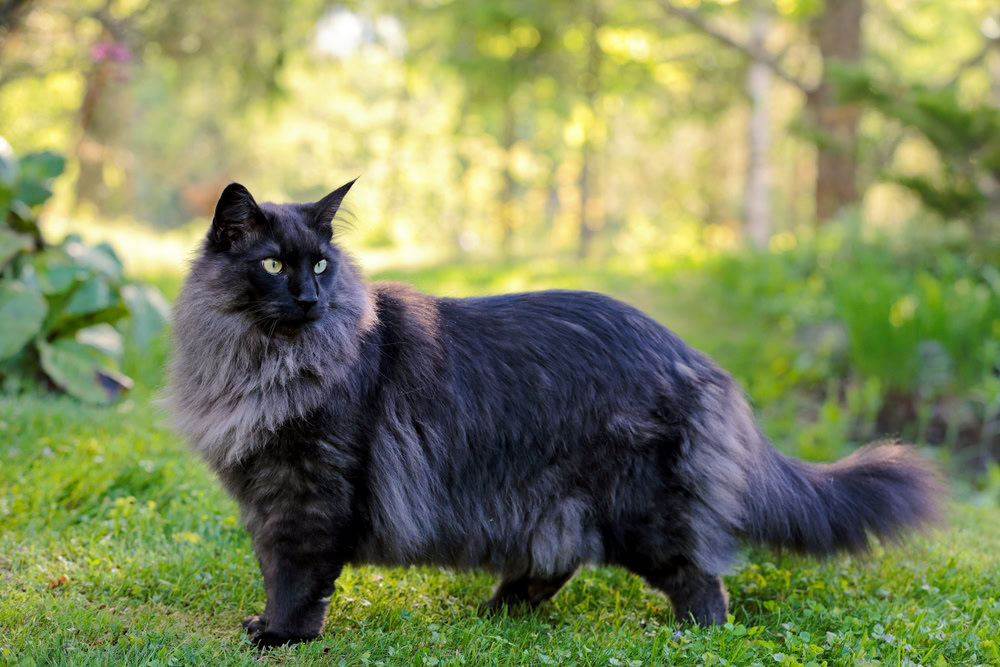
Breed Overview
Height:
17-25 inches
Weight:
8-17 pounds
Lifespan:
11-18 years
Colors:
All colors and patterns
Suitable for:
Active individuals
Temperament:
Intelligent, independent, affectionate
The Norwegian Forest Cat is a cat breed from Scandinavia, that can handle cold winter temperatures with its thick, water-resistant coat. These cats are excellent climbers, thanks to their strong bodies and sharp claws. While independent, they are also affectionate and enjoy spending time with their families. A unique trait of Norwegian Forest cats is their slow maturation, since they take up to five years to fully develop, making them one of the slowest-growing cat breeds.
4. Abyssinian
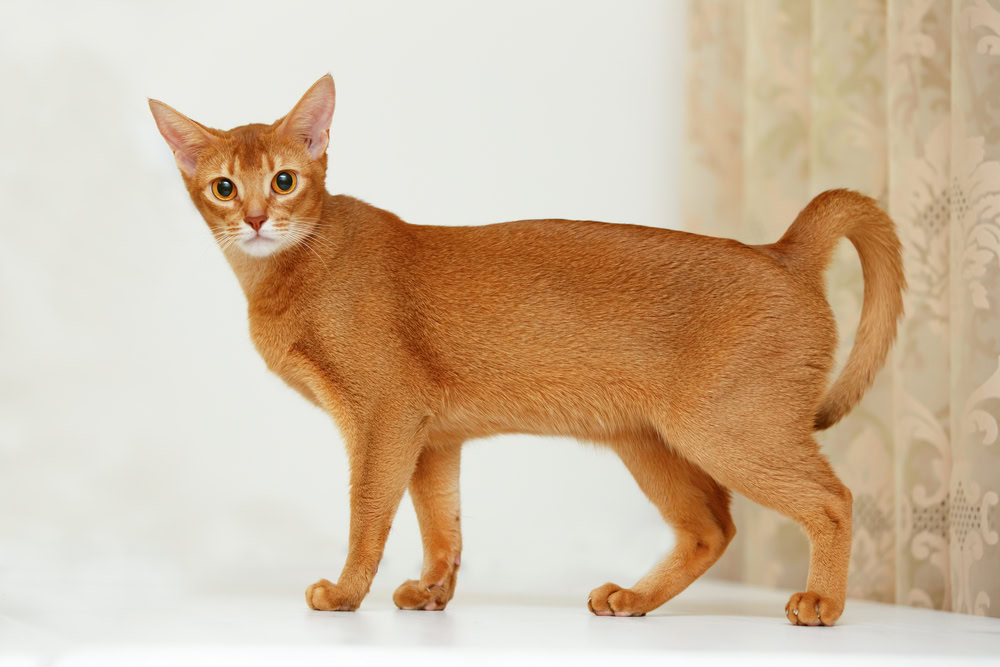
Breed Overview
Height:
12-16 inches
Weight:
6-13 pounds
Lifespan:
9-15 years
Colors:
Red, cinnamon, fawn, blue
Suitable for:
Families with older children
Temperament:
Intelligent, playful, curious
One of the oldest known cat breeds, the Abyssinian is believed to have origins tracing back to ancient Egypt. Their distinctive ticked coat pattern, results in each individual hair having multiple shades of color, giving the fur a shimmering effect, similar to wild felines like cougars. Abyssinians are always curious about their surroundings, playing and jumping whenever they have the chance to, requiring plenty of mental and physical stimulation.

Selectively Bred Cats
1. Persian
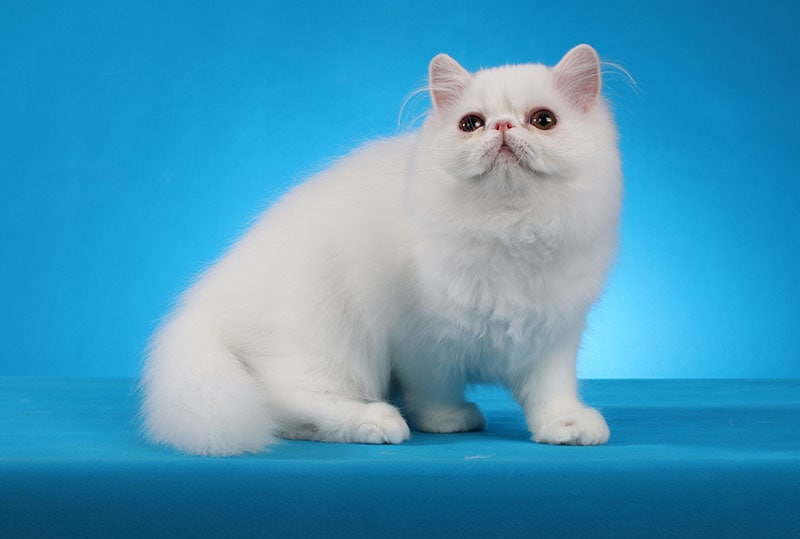
Breed Overview
Height:
10-15 inches
Weight:
7-13 pounds
Lifespan:
0-13 years
Colors:
Any
Suitable for:
Quiet households, need lots of grooming
Temperament:
Laid back, quiet
One of the oldest and most popular cat breeds in the world, the Persian is easily recognized by their thick, long coats, wide eyes, and short, sometimes flattened, faces. While they can be playful, most Persian cats will happily while away the hours curled up in their favorite spot.
2. Burmese
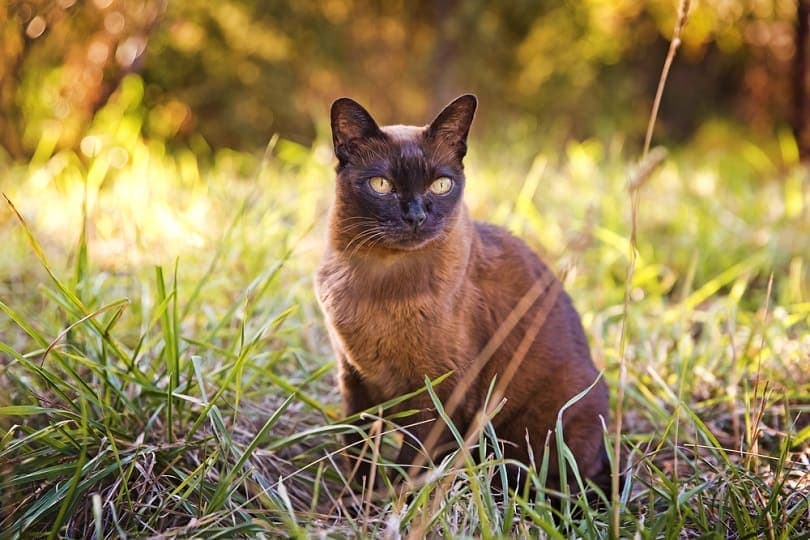
Breed Overview
Height:
9-13 inches
Weight:
7-15 pounds
Lifespan:
10-17 years
Colors:
Any
Suitable for:
Quiet households, need lots of grooming
Temperament:
Affectionate, friendly, ‘dog-like’
These super friendly and affectionate cats can trace their origins to one black female cat brought to the USA from Burma in 1930. Over time, the Burmese breed has undergone further division, with distinct European and US varieties. However, both are well known for their dog-like personalities and amiable nature.
3. Cornish Rex
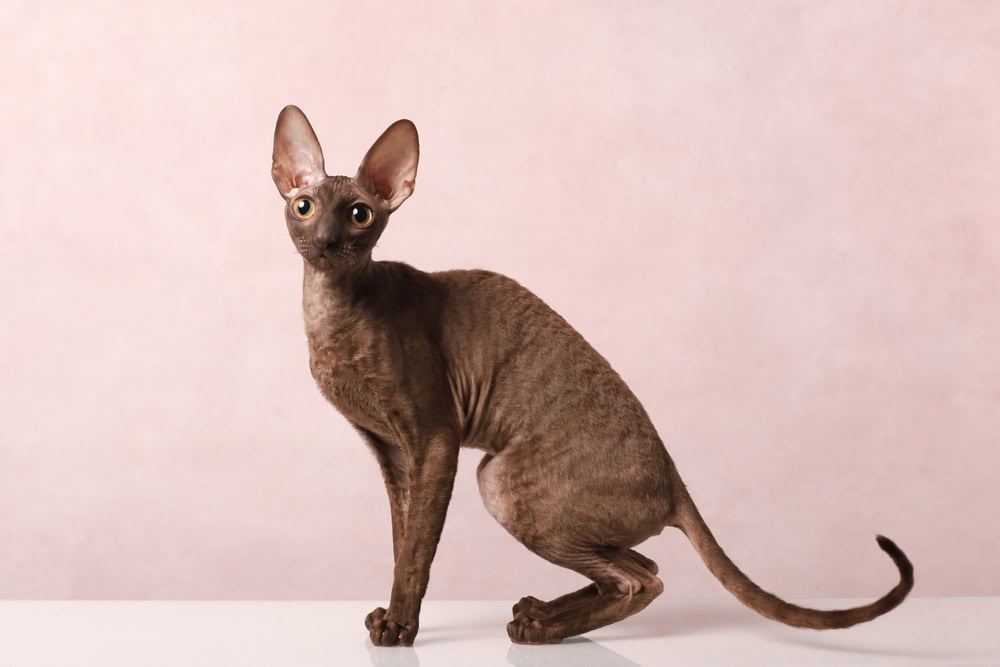
Breed Overview
Height:
8-12 inches
Weight:
5-10 pounds
Lifespan:
10-15 years
Colors:
Any
Suitable for:
Families, those looking for low-allergen cats
Temperament:
Social, intelligent, and trainable
The very first Cornish Rex, named Kallibunker, was the ‘odd kitten out’ in a litter born in 1950 to a tortie farm cat called Serena, in Cornwall, UK. In rather oedipal fashion, Kallibunker was mated to Serena to create more curly-coated kittens, with their number gradually increasing with further breeding. Their personalities are as quirky as their appearance, often standoffish at first, then difficult to get away from once you earn their trust.

Designer Breeds
A subset of the selectively bred cats, these cats have been created more recently by crossing pre-established or natural breeds to achieve new varieties.
1. Ragdoll
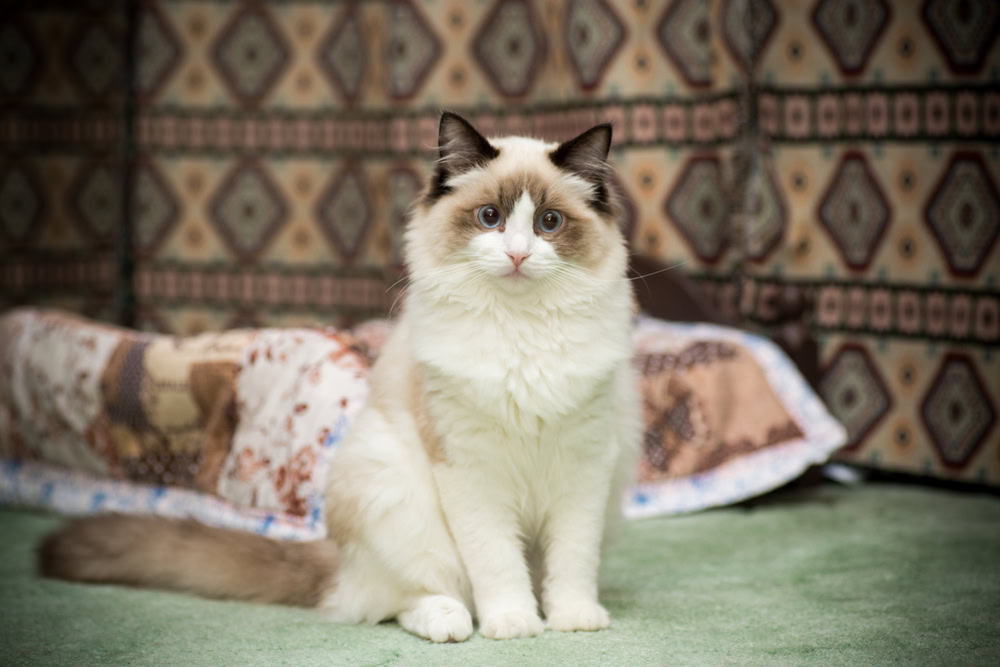
Breed Overview
Height:
9-11 inches
Weight:
10-20 pounds
Lifespan:
12-15 years
Colors:
Seal, chocolate, cream, lilac, blue, red
Suitable for:
All lifestyles
Temperament:
Calm, loyal, cuddly
The Ragdoll has been created through combining multiple long-haired breeds, including Persians and Birmans. They are known for their affectionate and calm nature. They have striking blue eyes, a long, silky coat, and a gentle temperament that makes them excellent companions. Ragdolls enjoy being around people, and often go limp when picked up, hence their name.
2. Tonkinese
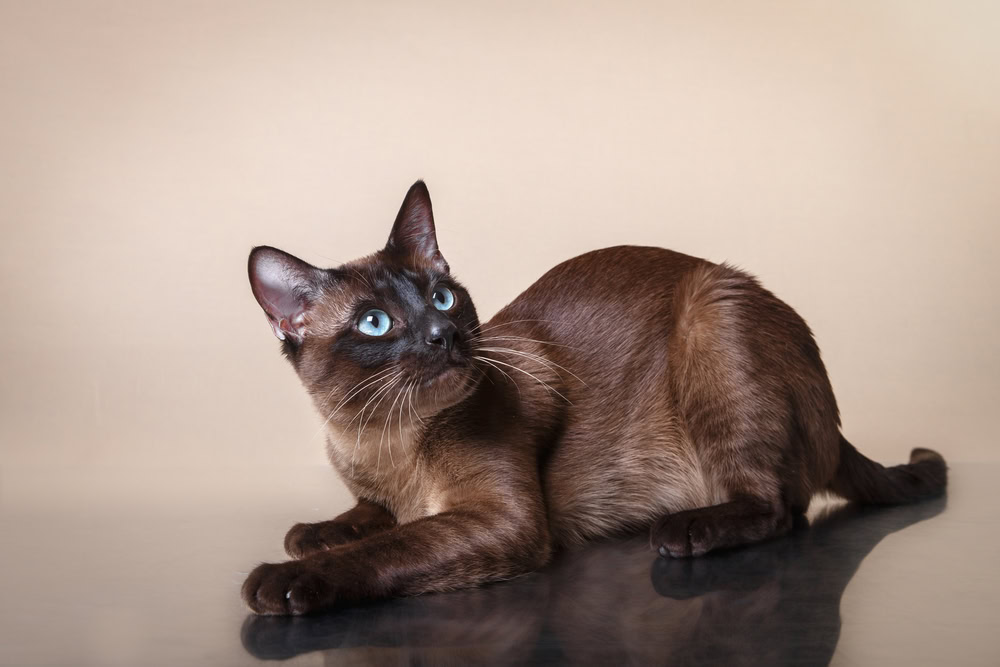
Breed Overview
Height:
6-8 inches
Weight:
6-12 pounds
Lifespan:
10-16 years
Colors:
Fawn and black, silver, gray, blue, lilac, brown
Suitable for:
Families with older children, seniors, couples
Temperament:
Playful, intelligent, loyal
The Tonkinese is a mix between the Siamese and Burmese, to create a compact and resilient colorpoint cat. They were developed to balance the vocal nature of the Siamese with the easygoing temperament of the Burmese. They tend to have playful energy, and an affectionate behavior, making them ideal for active households.
3. Burmilla
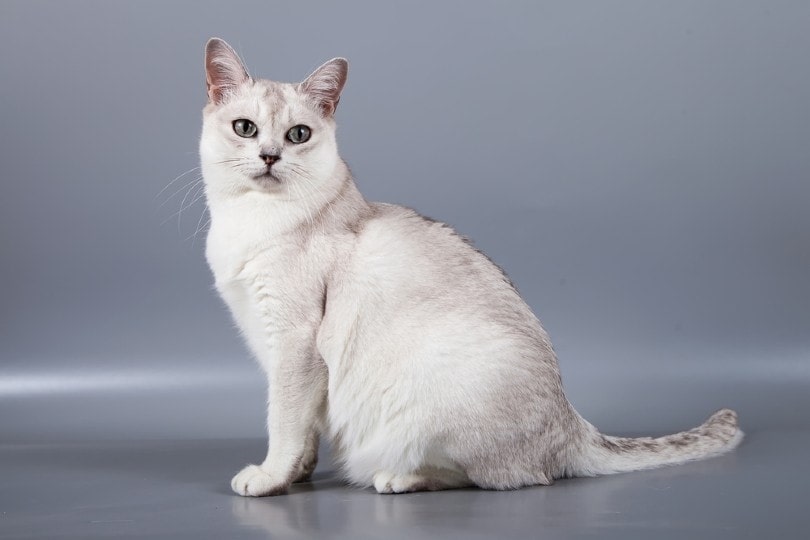
Breed Overview
Height:
10-12 inches
Weight:
6-13 pounds
Lifespan:
7-15 years
Colors:
Blue, chocolate, caramel, beige, apricot, lilac
Suitable for:
All lifestyles
Temperament:
Social, loyal, playful
The Burmilla was first developed in the U.K. in the early 1980s, resulting from an accidental cross between the Chinchilla Persian and Burmese. Burmillas are affectionate, playful, and intelligent, creating a perfect balance between the Burmese’s active temperament and the Persian’s gentle behavior, making them ideal companions for families and indoor living.

Mutation Cat Breeds
A mutation cat breed is a breed that originated from a spontaneous genetic mutation rather than a more gradual process of selective breeding. These mutations can affect a cat’s coat, body form, or other physical traits. Breeders then selectively developed these traits over generations to establish a distinct breed.
1. Scottish Fold
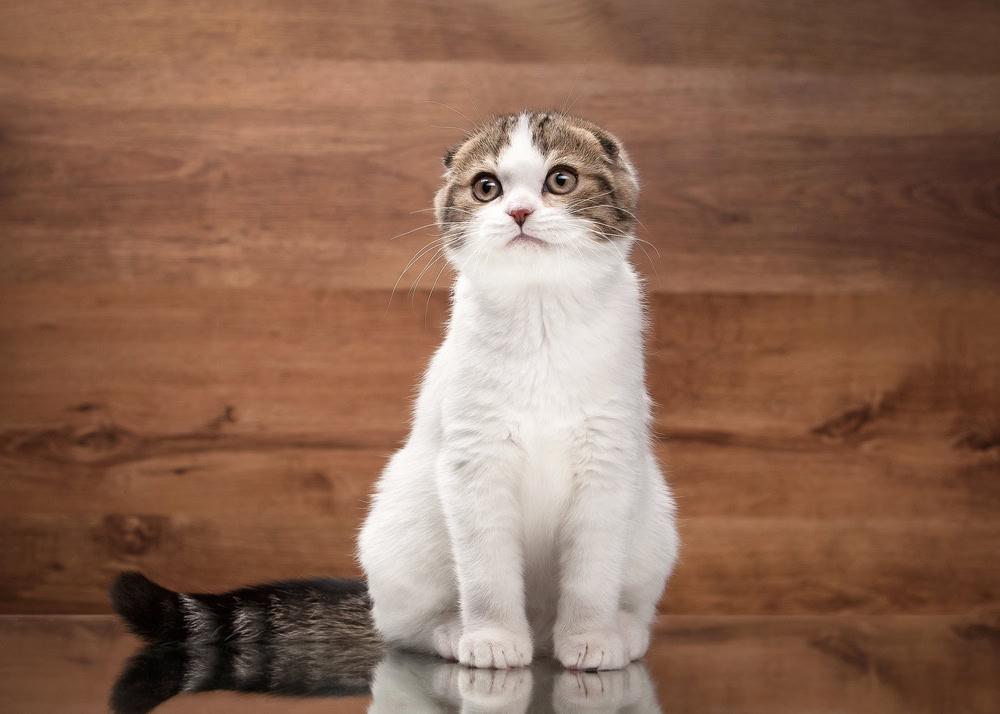
Breed Overview
Height:
7-10 inches
Weight:
6-13 pounds
Lifespan:
13-16 years
Colors:
Black, white, red, silver, chocolate
Suitable for:
Apartment living
Temperament:
Friendly, social, calm
The Scottish Fold is easily recognized by their round faces and folded ears. The first Scottish Fold was Susie, who was born in 1961 in Scotland and was a result of a natural genetic mutation since the other cats in her litter were born with normal-shaped ears. Many animal welfare groups oppose the breeding of the Scottish Fold because the mutation that creates their distinctive ears also causes cartilage and joint problems, often resulting in severe arthritis.
2. Munchkin
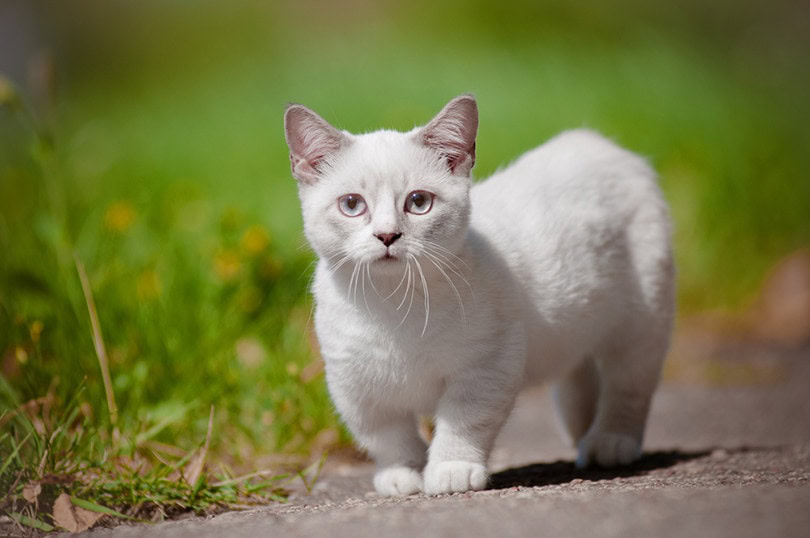
Breed Overview
Height:
6-9 inches
Weight:
6-9 inches
Lifespan:
2-15 years
Colors:
White, black, red, brown, blue, cream
Suitable for:
Families with older children or pets
Temperament:
Playful, smart, friendly
The Munchkin cat is known for their short legs, a result of a genetic mutation that affects the length of their legs. Despite their small size, Munchkins are playful, and energetic, and love to chase toys and climb wherever they can. The genetic mutation that results in the Munchkin’s short legs, unfortunately also makes these kitties prone to suffering from osteoarthritis and other musculoskeletal problems, and like the Scottish Fold, many animal welfare groups are against breeding these cats.
3. American Curl
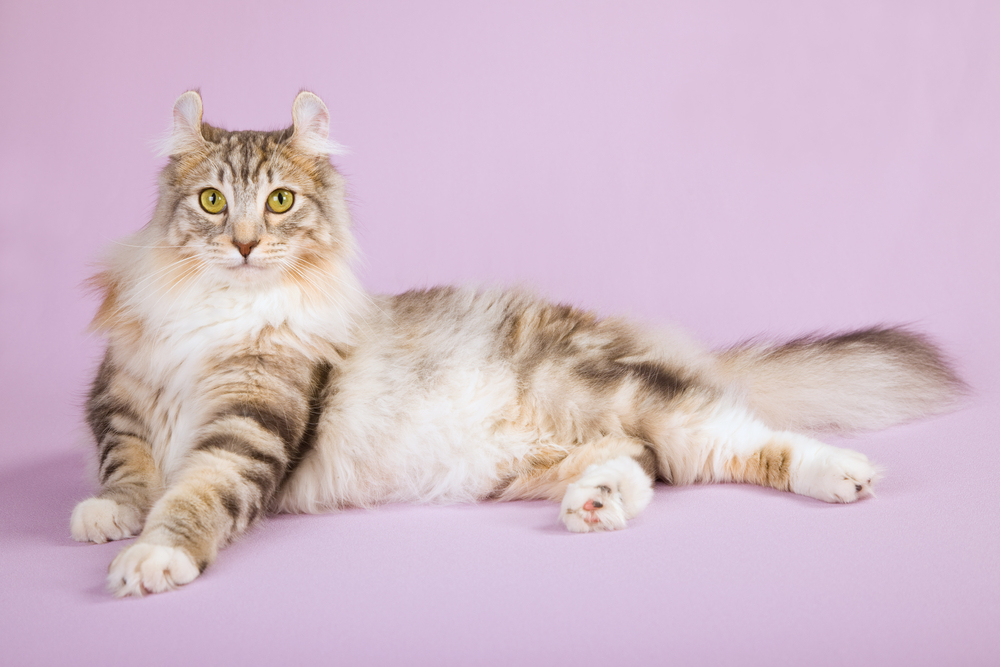
Breed Overview
Height:
18-20 inches
Weight:
5-12 pounds
Lifespan:
12-16 years
Colors:
White, black, red, brown, blue, cream, blue, tabby
Suitable for:
All lifestyles
Temperament:
Playful, affectionate, people-pleasing
The American Curl is a unique breed with ears that curve backward. Kittens are born with straight ears, which begin to curl within the first few days of life. Their ears need to be handled carefully, as the ear cartilage can be easily damaged. American Curls are known to be vocal, often greeting pet owners and other animals with soft chirps and purrs. These cats don’t appear to suffer with the same joint and cartilage issues seen in the Scottish Fold, but this has not been completely established.
4. Selkirk Rex
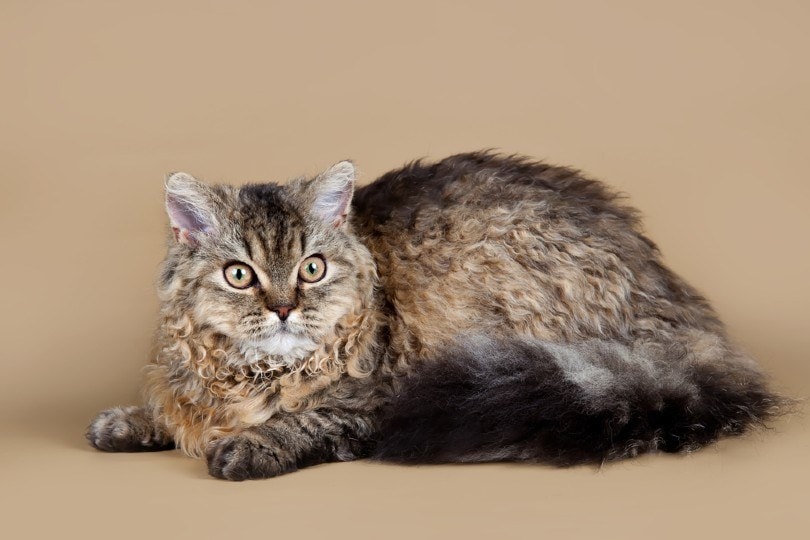
Breed Overview
Height:
9-11 inches
Weight:
6-16 pounds
Lifespan:
10-15 years
Colors:
White, black, red, cream, chocolate, lavender
Suitable for:
All lifestyles
Temperament:
Active, social, independent
The Selkirk Rex has a plush, curly coat that sets it apart from other breeds. They are nicknamed “the cat in the sheep’s clothing”, and this unique fur results from a spontaneous genetic mutation, giving them a woolly texture. Unlike some curly-haired breeds, the Selkirk Rex has a dense coat that can be either short or long. Personality-wise, they are often described as having dog-like behavior and loyalty, making them wonderful companions.

Conclusion
The world of cat breeds is vast and diverse, with each breed offering something unique in terms of personality, appearance, and care requirements. Whether you’re drawn to the wild look of an exotic cat, the unique traits of a mutation breed, or the history of a naturally occurring feline, there is a perfect cat for every type of owner. If a hybrid cat appeals to you most, make sure you do your homework with regards to the legalities of keeping one, as well as their unique and complex needs when kept as pets. Understanding the characteristics of each breed can help you choose the right companion and ensure they receive the best care possible.
Featured Image Credit: Katniss-studio, Shutterstock
